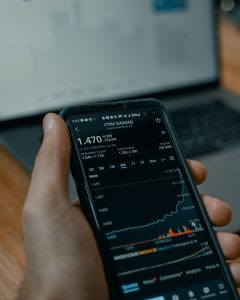Understanding Forex Trading Margin: How It Works and Why It Matters
Forex trading, also known as foreign exchange trading, is a decentralized global market where the world’s currencies are traded. It is one of the largest and most liquid markets in the world, with an average daily trading volume exceeding $6 trillion. If you are new to forex trading, one concept that you must understand is margin.
In forex trading, margin refers to the collateral that traders need to provide to their brokers in order to open and maintain a trading position. It allows traders to control larger positions with a smaller amount of capital. The use of margin amplifies both potential profits and losses, making it a crucial aspect of forex trading.
How Does Forex Trading Margin Work?
When you open a forex trading account, your broker will require you to deposit a certain amount of money as margin. This initial margin requirement varies from broker to broker but is usually a small percentage of the total position size. For example, if your broker requires a 1% margin, and you want to trade a standard lot (100,000 units of the base currency), you would need to deposit $1,000 as margin.
Once you have opened a position, your broker will set aside the required margin from your account balance. This margin acts as a collateral or a good faith deposit, ensuring that you have enough funds to cover any potential losses. If the market moves against your position and your losses exceed the available margin, a margin call will be triggered.
A margin call is a notification from your broker demanding that you deposit additional funds to meet the minimum margin requirements. If you fail to do so, your broker has the right to close your position, resulting in a loss. It is important to monitor your positions closely and manage your risk effectively to avoid margin calls.
Why Does Margin Matter in Forex Trading?
Margin is a critical component of forex trading for several reasons. Firstly, it allows traders to leverage their positions. By trading on margin, you can control a larger position size with a smaller amount of capital. This amplifies the potential profits if the market moves in your favor. However, it is important to note that leverage also increases the potential losses if the market moves against your position.
Secondly, margin allows traders to participate in the forex market even with limited capital. Without margin, traders would need to have the full amount of the position size in their trading account, which can be a significant barrier for many individuals. Margin enables traders to access the forex market with a fraction of the total position size, making it more accessible.
Furthermore, margin allows for greater flexibility in trading strategies. Traders can open multiple positions simultaneously, diversify their portfolio, and take advantage of various trading opportunities. Margin provides the necessary liquidity to execute these strategies effectively.
However, it is crucial to understand the risks associated with trading on margin. While it can amplify profits, it can also amplify losses. Traders must have a solid risk management plan in place to protect their capital and avoid excessive exposure. It is recommended to only trade with funds that you can afford to lose and to use stop-loss orders to limit potential losses.
In conclusion, margin is a fundamental concept in forex trading. It allows traders to control larger positions with a smaller amount of capital, making the forex market more accessible. However, it also amplifies both potential profits and losses, emphasizing the need for effective risk management. Understanding margin and its implications is essential for any forex trader to navigate the market successfully.






